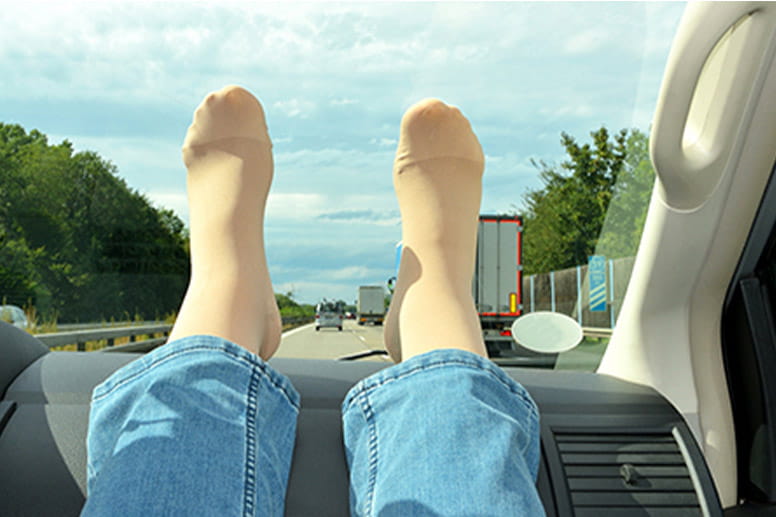From improving blood flow to reducing swelling, compression socks can help relieve symptoms of vascular disease in your legs.
Whether you’re looking to treat varicose veins or improve blood flow to your legs, wearing compression socks can offer a quick and easy solution. In fact, the gentle compression they provide can actually improve your vascular health.
The best part? You probably won’t even know they’re there.
What are compression socks?
Also called compression stockings, compression socks are no ordinary socks. This specialized hosiery promotes healthy blood flow and improves circulation by applying gentle pressure to the legs. Compression socks can be worn to relieve symptoms of venous disease, including:
- Swelling in the legs
- Achiness or a feeling of heaviness in the legs
- Skin discoloration
- Bulging veins
“Compression socks offer a minimally invasive treatment for vascular disease,” says Dr. Ksenia Orlova, a vascular surgeon at Geisinger Medical Center in Danville.
What are compression socks used for?
If you’re experiencing vascular symptoms like the ones mentioned above, the first step is to make an appointment with your healthcare provider. After assessing your symptoms and determining whether compression socks are right for you, your doctor may prescribe them to improve your vascular health.
“Wearing compression socks can be an effective treatment for vascular conditions, like varicose veins or chronic vascular disease,” Dr. Orlova says. “They can help relieve symptoms and improve blood flow to your legs.”
Compression stockings are worn just like regular socks — they’re comfortable enough to wear during daily activities or while you’re asleep.
How long to wear compression socks
Depending on your situation, it may be best for you to wear your socks for the entire day or for a few hours at a time. Your doctor can offer guidance on how long — and how frequently — you should be wearing them.
“You may need to wear them for just a few days or a few weeks or longer to properly treat your symptoms,” Dr. Orlova adds.
Finding the right fit
Not all compression socks are created equal. Each type offers different levels of compression, from light to firm. Your doctor can help you identify the right level of support based on your needs.
Once you’ve identified the level of compression that works best for you, a pharmacist or technician will take measurements around your thighs, calves and ankles. This helps make sure that your socks fit correctly and aren’t too tight (or loose). Once you find the right fit, your doctor or pharmacist will order your socks.
When you receive your new stockings, you’ll put them on like you would any other socks. They should feel snug, but not tight. If they start to fall down or you notice any rips or tears, it may be time to replace them.
While you’re wearing your compression hose, you and your healthcare provider will stay in contact to monitor your symptoms and determine when you can stop using them.
“That short-term support is sometimes all you need to relieve your symptoms,” says Dr. Orlova.
Next steps:
Learn more about vascular surgery at Geisinger
Make an appointment with Ksenia Orlova, MD
Learn more about vascular disease care






































